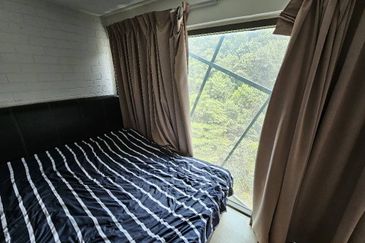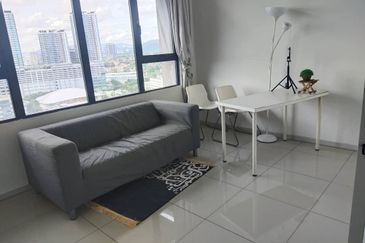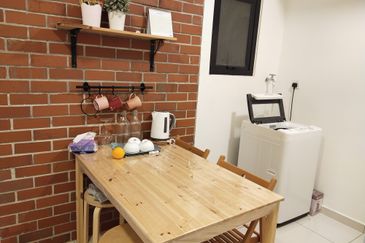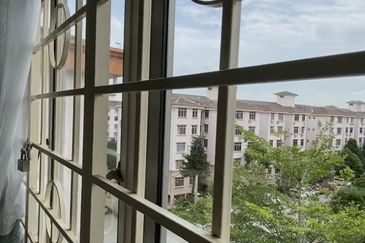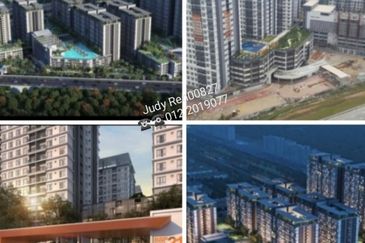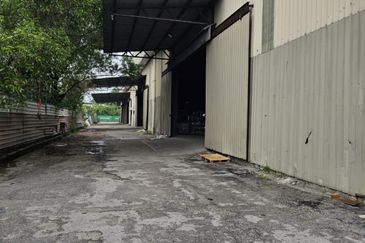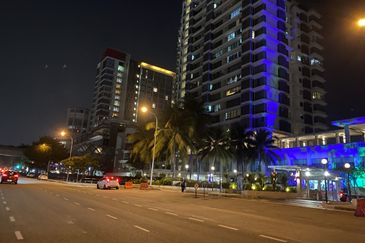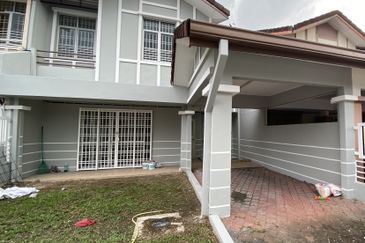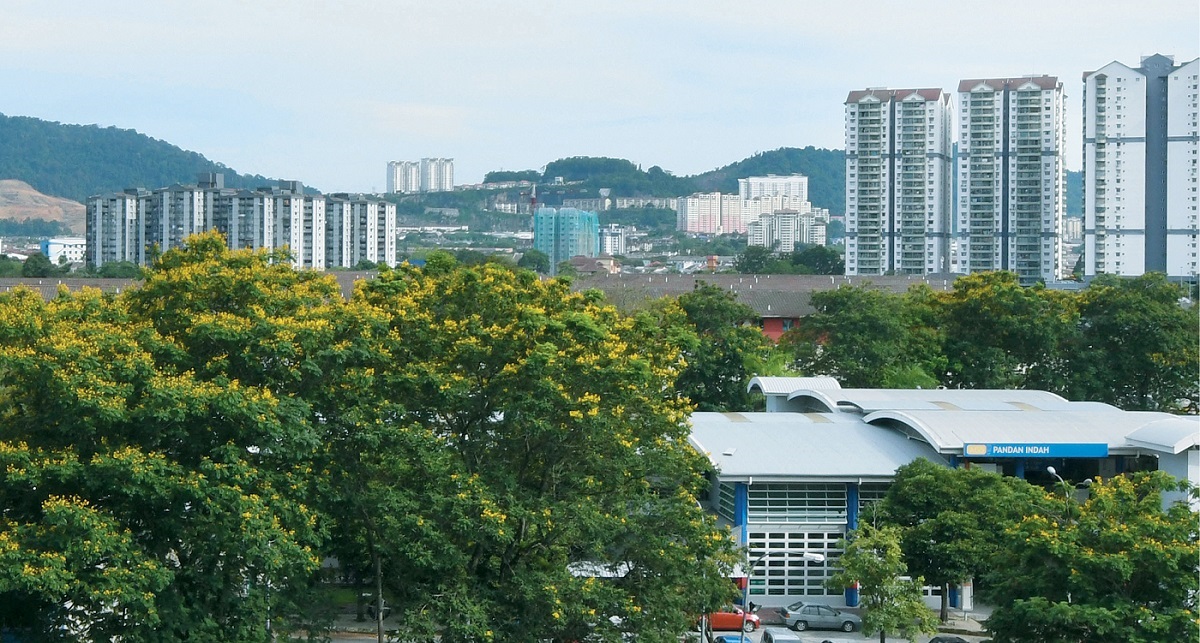
Located strategically at the fringe of Kuala Lumpur city centre, Pandan Indah is a major township in Ampang, Selangor. It is also the administration centre of Ampang Jaya Municipal Council, or Majlis Perbandaran Ampang Jaya. Sandwiched between Pandan Perdana and Pandan Jaya, Pandan Indah enjoys good infrastructure, facilities and amenities nearby.
Pandan Indah comprises mostly mid- to low-range non-landed residential properties such as low- and medium-cost flats as well as higher-end condominiums like Le Jardin Condominium, Nuri Court and Pandan Mewah Heights. There are also single- and double-storey terraced homes located in Taman Pandan Indah, Taman Lembah Maju and Taman Maju Jaya.
 According to the Department of Statistics Malaysia, the estimated population of Selangor stands at about 6.3 million as at 2010, with the population of Ampang Jaya at 342,676. In Ampang town alone, the estimated population as at 2010 is about 56,085.
According to the Department of Statistics Malaysia, the estimated population of Selangor stands at about 6.3 million as at 2010, with the population of Ampang Jaya at 342,676. In Ampang town alone, the estimated population as at 2010 is about 56,085.
Although it seldom comes up on the radar of property investors, Pandan Indah’s close proximity to Kuala Lumpur city centre makes it highly attractive for urban workers looking for affordable housing, says property consultancy firm MacReal International Sdn Bhd founder Michael Kong.
“It is one of the highest populated towns in Malaysia due to a concentration of socioeconomic activities.
“And due to its relatively cheaper housing rentals and prices compared to KL downtown, a majority of the working class prefers to reside in or relocate to Pandan Indah,” he tells TheEdgeProperty.com. Thus, it is also a popular area for urban migrants.
Affordability sells in Pandan Indah
Jordan Lee & Jaafar Sdn Bhd executive director Chin Shiow Wei concurs. “Pandan Indah is only about 8km (via Lebuhraya Sungai Besi) to KL. It is located at the fringe of KL city centre, so it is close to the amenities and commercial areas available in the city centre,” she says.
Chin also notes that transactions of non-landed residential properties in Pandan Indah have slowed due to the market slowdown, although they have remained strong.
“This is due to a few possible reasons, such as location, affordability, connectivity and the taste for the modern city lifestyle with the abundance of amenities in the area.
“Pandan Indah is considered a low-medium-income locality but a relatively young population where the largest age-group in the area is between 25 and 29 years. These are young people who are generating income,” she says.
“The young demography of the area has contributed to the popularity of non-landed properties in Pandan Indah. The bulk of purchasers comprise the younger generation and first-time buyers as they find the non-landed residences more affordable than the landed properties,” she adds.
An analysis of transaction data by TheEdgeProperty.com found that the average transacted price of non-landed residential properties in Pandan Indah has increased to RM201,700 in 2015 from RM151,746 in 2012 — up nearly 33%.
For the first nine months of 2016, the average transacted price for non-landed homes in Pandan Indah has risen to RM230,446, or RM270 psf, representing a growth of about 12% in terms of absolute price from the same period in 2015. Since 1Q2016, the average transacted price seems to be on a downward trend. However, it must be noted that the average transacted price in 1Q2016 was RM237,510, based on 51 transactions, while in 3Q2016, the figure was RM200,200, based on only eight transactions.
 Chin expects the average transacted price to be stable or to grow at a slower pace in the next few years.
Chin expects the average transacted price to be stable or to grow at a slower pace in the next few years.
On the average asking rents for condos in Pandan Indah, Chin says they usually hover between RM1,400 and RM1,800 per month, with an indicative rental yield of 4% to 5%. The average asking rent for flats is between RM500 and RM800 and they usually could fetch a higher indicative rental yield of about 6%.
Upcoming high-rise homes
According to Chin, the young working class, which makes up the majority of Pandan Indah’s population, enjoys the convenience of the ample amenities at their doorsteps including hospitals, shopping centres and schools, such as MidPoint Shopping Complex, Hospital Ampang and Sekolah Kebangsaan Pandan Indah.
Kong concurs. He also noted that as Pandan Indah is categorised as a high-density area by the local government, it means new property developments in the area will mostly likely be high-rise stratified homes.

“Based on our research, there is no new landed residential developments in Pandan Indah,” he says. However, there are a number of upcoming and ongoing non-landed residential projects in the surrounding vicinity including Residensi Pandanmas, which is a Federal Territories Affordable Housing Scheme project jointly developed by Aset Kayamas Sdn Bhd and Faber Vista Sdn Bhd in Kampung Pandan; 28 Boulevard by Beverly Group’s subsidiary Best Boulevard Sdn Bhd, which is a redevelopment project of the former Pandan Lake Club in Pandan Perdana; Shamelin Sky Residence in Taman Shamelin by HKS Development Sdn Bhd; and several 1Malaysia People’s Housing projects in Pandan Indah, Pandan Jaya and Taman Cempaka.
For landed homes, there is only one newly completed townhouse project called Neos @ Taman Pandan Mas by Trans Loyal Development Sdn Bhd located in Taman Pandan Mas, Pandan Jaya.
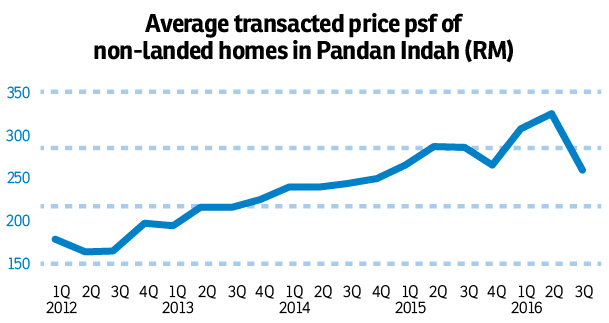
Growing interest despite challenging outlook
On its outlook, Jordan Lee & Jaafar’s Chin says in the short term, the non-landed residential property market in Pandan Indah will be slightly challenging due to the current tight lending policy by financial institutions.
“[This applies] especially on the young and income-generating group where their income level may not be high and they are generally already quite in debt. We foresee growth in transactions albeit at a slower pace,” she says.
 However, MacReal’s Kong believes there is still much interest and housing demand in Pandan Indah, owing to its accessibility to the city centre, existing and upcoming infrastructure as well as amenities.
However, MacReal’s Kong believes there is still much interest and housing demand in Pandan Indah, owing to its accessibility to the city centre, existing and upcoming infrastructure as well as amenities.
Pandan Indah is accessible via the Middle Ring Road 2, which runs through the western flank of the area, linking it with Ampang (KL and Selangor), Ulu Kelang as well as neighbouring Cheras and Sri Petaling.
“The extension of the Besraya Expressway has also reduced travelling time from Ampang and Pandan Indah to downtown KL, Sungai Besi and Petaling Jaya.
There are already three existing Light Rail Transit stations on the Ampang Line that serves Pandan Indah and the surrounding vicinity, namely the Pandan Indah station, the Pandan Jaya Station, and the Cempaka Station,” says Kong.
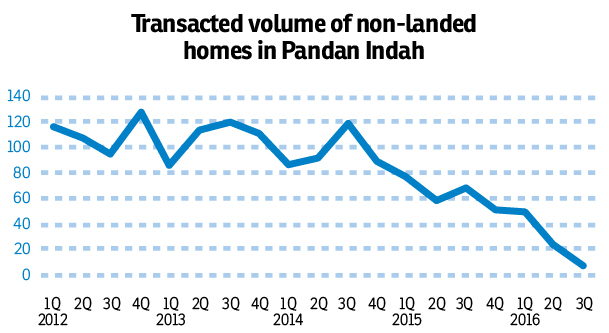
Furthermore, the soon-to-be-completed Mass Rapid Transit (MRT) Line 1 will further enhance the accessibility of the area. MRT Line 1, which runs from Sungai Buloh to Kajang, offers three stations not too far – estimated all less than 10km by driving – from Pandan Indah, namely the Maluri interchange station, Taman Pertama and Taman Midah stations, he notes.
On the flip side, however, traffic congestion, noise and air pollution as well as being crime-prone are some of the drawbacks of living in Pandan Indah, says the real estate consultants.
Kong notes that living in high-density areas can put a lot of stress on facilities, amenities and other resources as they are being shared by a large number of people.
“Hence, it is important that the local authority manages and maintains the local infrastructure, facilities and amenities well, and carries out enforcement dutifully so as to not allow the area to turn into an urban slum – which is common among areas with high-density low- to medium-income population,” warns Kong.
This story first appeared in TheEdgeProperty.com pullout on May 5, 2017. Download TheEdgeProperty.com pullout here for free.
TOP PICKS BY EDGEPROP
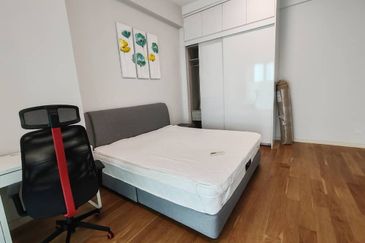
Vogue Suites 1 @ KL Eco City
Bangsar, Kuala Lumpur

Dorsett Residence, Sri Hartamas
Sri Hartamas, Kuala Lumpur

Damansara Heights (Bukit Damansara)
Damansara Heights, Kuala Lumpur
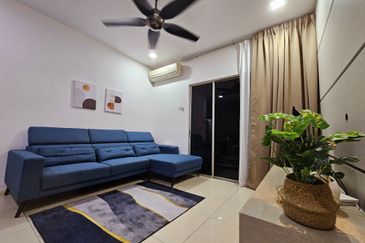
Paradesa Tropica
Bandar Sri Damansara, Selangor
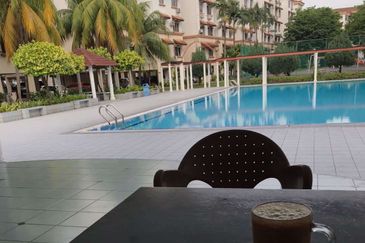
Subang Perdana Goodyear Court 10
Subang Jaya, Selangor
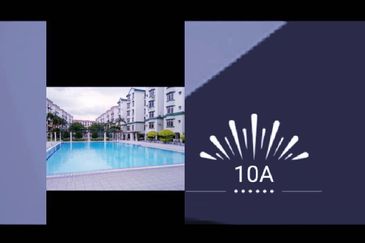
Subang Perdana Goodyear Court 10
Subang Jaya, Selangor

Petaling Jaya Commercial City
Petaling Jaya, Selangor

Subang Perdana Goodyear Court 10
Subang Jaya, Selangor

Subang Perdana Goodyear Court 10
Subang Jaya, Selangor

